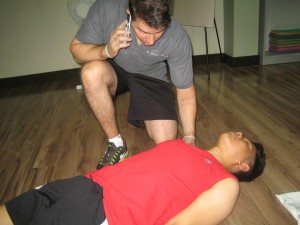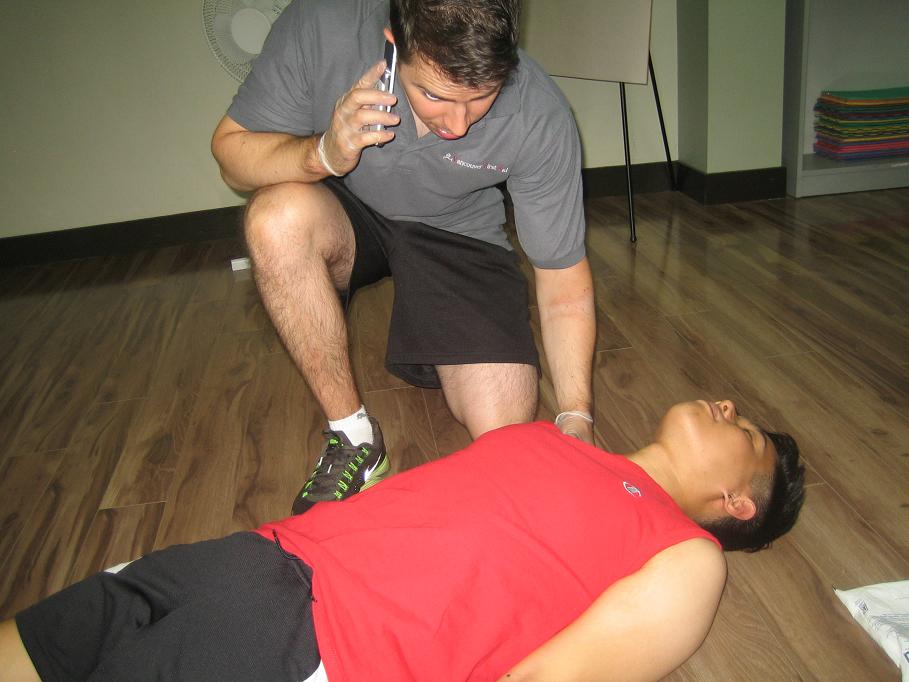The body temperature is a balance between heat gain and heat loss. Maintenance of a constant body temperature is important in maintaining the normal function of the bodily enzymes. In other words, normal oral temperature, which is 36.1 – 37.20 C (97-990 F), is vital in maintaining homeostasis within the body. However, there are times when the amount of heat from the environment cannot be adequately controlled by the body’s normal heat regulating system which can result in a heat stroke which should be treated as a medical emergency.
The material posted on this page on heat and environmental emergencies is for learning purposes only. To learn to recognize and manage heat stroke, cramps and exhaustion sign up for a first aid and CPR class with one of our providers today.
Heat Health Hazards
The following are conditions that can alter the body’s temperature beyond its limits that can result in potential health emergency situations.
This is a condition in which heat gain exceeds heat loss in the body due to the body’s exposure to hot environments, excessive exercise, or fever.
This is characterized by an increased body temperatures and heavy sweating which may lead to dehydration. In this condition, the normal body temperature reduction mechanisms are still working, but cannot cope with the excessive environmental heat.
- Heat stroke
This is an acute medical emergency in which the body’s temperature reduction mechanisms such as sweating, is no longer enough. This results in an increase in the level of hypothalamic set point.
Risk Factors for heat stroke
Children and the elderly are at most potentially at risk for a heat stroke because their circulatory systems are incapable of releasing the heat out of the body. Likewise, people with chronic and debilitating conditions, the alcoholics, and those taking medications like diuretics and tranquilizers are at high risk of heat stroke as well. Heat stroke can also occur in healthy individuals involved in sports, exercise, and other work activities under extreme heat.

Signs and Symptoms of Heat Stroke
The most important sign to watch out for is a markedly elevated body temperature of 40.60 C (1050 F) or more. This is usually accompanied by an altered mental status (confusion, delirium, and behavior changes), hot and dry skin, absence of sweating (anhidrosis), a feeling of dizziness, nausea, headache, syncope, increased respiratory rate, and increased heartbeat.
First Aid for Heat Stroke
- Remove the patient directly under the heat of the sun and bring into a shady area.
- Remove the patient’s clothing or loosen restrictive clothes.
- Fan the patient. If possible, take the victim to an air-conditioned room.
- Call for medical help.
- While waiting for assistance, help cool down the temperature by applying water on the skin or placing the person in cool water to help increase evaporation of heat from the skin.
- Use cool sheets and do continuous sponging with cool water.
- Apply ice to the skin and use cooling blankets.
- Massage the patient during the cooling procedure to promote circulation.
- Provide adequate hydration if the person is fully awake.
- Bring to nearby emergency department for further management.
References:
Smeltzer, S., Bare B., and Brunner S. (2008). Brunner and Suddarth’s Textbook of Medical-Surgical Nursing. USA: Lippincott-Raven Publishers.

